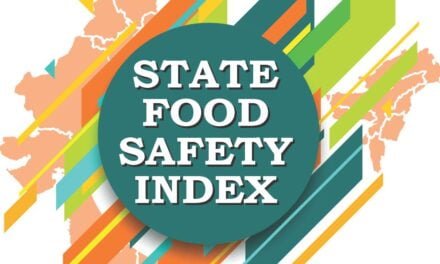COVID and other factors like rising costs have already put millions in Asia at risk. They have no access to healthy diets, which could have major consequences in the future. According to an FAO report, the challenge for governments is to devise policies to improve food systems to cope with pandemics, natural disasters, poverty, and political instability that come in the way of improved access to enough food.
The UN’s Food and Agricultural Organisation (FAO), in a recent report, has highlighted the fact that access to food took a turn for the worse in 2020. The situation deteriorated in 2021 as governments struggled to keep Covid outbreaks at bay by restricting travel and other activities.
The prolonged pandemic, coupled with rising prices, undermined food security for millions of people in Asia. The FAO report said 1.8 billion lacked access to healthy diets. The report also pointed out that the means to alleviate hunger had stalled. So it was necessary for the implementation of comprehensive measures to improve food security that would be part of a push to what experts call a “food systems” approach.

David Dawe, senior economist at the FAO’s regional office for Asia and the Pacific, said the organisation’s food price index rose by nearly a third in 2021. For example, vegetable oils that are necessary for health saw a rise of 74 per cent, he said. In what he described as “another blow to the poor, who spend a large percentage of their income on food and are struggling to recover from the impacts of COVID-19”, Dawe said rising global commodity prices had affected consumers. “Food producers have also faced more recent challenges after the initial impact of the pandemic, including rising fuel and fertilizer prices,” he said.
The situation could see a change with the transformation of systems to improve food security. The FAO report said that this would have to revolve around the needs of the many small-scale farmers in the region and other vulnerable groups such as indigenous peoples, women, and children. The report also noted that nearly 16 per cent of people in South Asia were undernourished. In the region, undernourishment is at its highest level in a decade, at 8.7 per cent.
With more than 40 per cent of its people undernourished, North Korea is one of the worst hit. However, hunger is an urgent problem also in Afghanistan, Papua New Guinea, and East Timor.

Though conditions across the region were better than they were in 2000, the progress in recent years has slowed and, in some cases, reversed. In 10 countries in the region, more than 30 per cent of children under five years old suffer from stunting, or low height for age, a standard measure for how well fed they are. In another eight countries, between 20 per cent and 30 per cent do. This kind of deprivation has long-lasting consequences, as children suffer from weaker health and fail to achieve their full potential.
Millions of children suffer from wasting, a potentially more dangerous condition due to inadequate food or prolonged illness. In 2020, more than 31 million children in the Asia-Pacific will be affected by wasting, and that number could rise to 40 million by the end of 2022 if current trends continue.
The FAO and others working on hunger are urging that efforts focus on broader issues than just raising the amount of food that is produced – a crucial step but one that does not ensure families can actually afford healthy diets. The challenge is in devising policies to improve food systems to cope with pandemics, natural disasters, poverty, political instability, and other challenges that get in the way of improved access to enough food.
Ending Hunger and All Forms of Malnutrition by 2030: Key Messages
- New projections confirm that hunger will not be eradicated by 2030 unless bold actions are taken, especially actions to address inequality in access to food. The COVID-19 pandemic has worsened the discouraging trends that already existed before the crisis.
- Projections consider the potential impact of the COVID-19 pandemic suggest that, following a peak of more than 760 million people in 2020, global hunger will decline slowly to fewer than 660 million in 2030.
- While a substantial reduction in hunger is projected for Asia by 2030, a significant increase is forecasted for Africa, placing it by 2030 on par with Asia as the region with the highest number of undernourished people.
- Globally, progress is being made for some forms of malnutrition, but the world is not on track to achieve targets for any of the nutrition indicators by 2030.
- Despite poor progress at the global level, notable improvements are occurring in some areas, with about one-quarter of countries confirmed to be on track to reach the 2030 SDG targets for childhood stunting.
Have a news or topic to share with industry? Write to us editorial@pfionline.com

















